Prototyping Interactive Architecture
Based on the changing soundscape as a distinctive feature of the context of the DMOA office, the use of sound as a medium for the interactive façade was considered a unique idea. Using low-fidelity prototyping, several ways of expressing a soundscape were explored. As the artificial sound of speakers would deteriorate the authenticity of the materials and the building as a whole, the focus shifted towards physically creating soundwaves by actuating the material itself. First prototypes focused on the concept of embedding a metal tube into the outer concrete façade, in which various soundwaves could be created by either air pressure (e.g. organ pipes) or mechanical actuation (e.g. rattling chain, wind chimes…). After numerous iterative prototypes and experiments, the wooden window frames were (re)interpreted as ‘architectural instruments’. In each opening window a wooden bar, able to resonate freely is integrated into the window sill, which can be actuated by the mechanical hammering motion of a small piston, electronically driven by a solenoid.
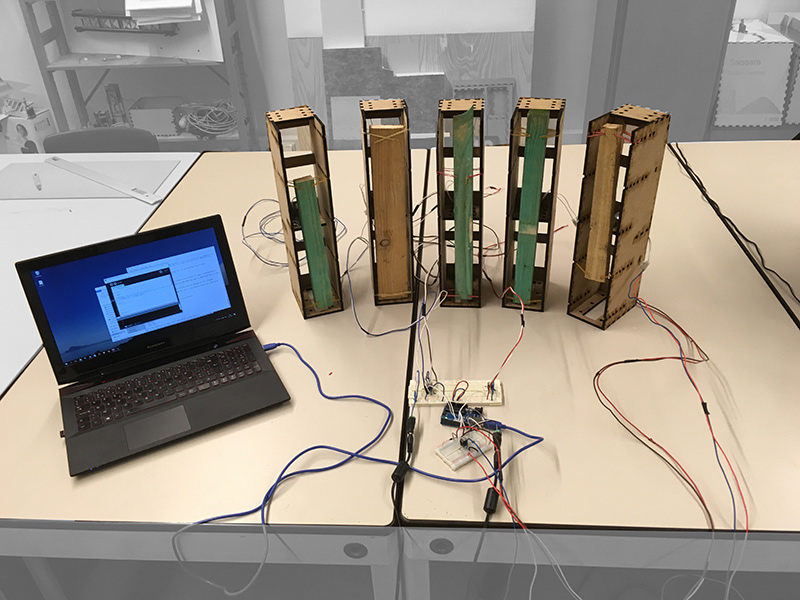
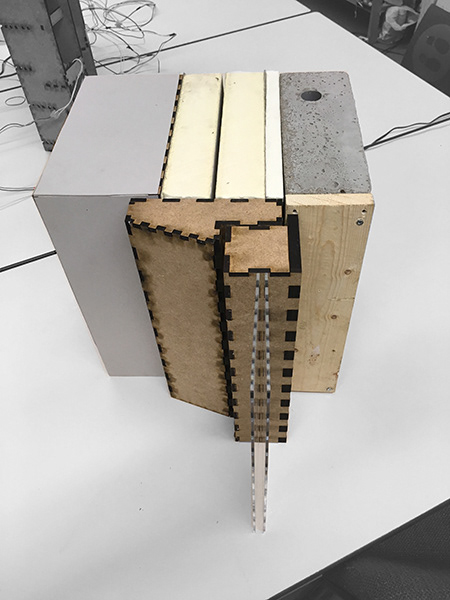

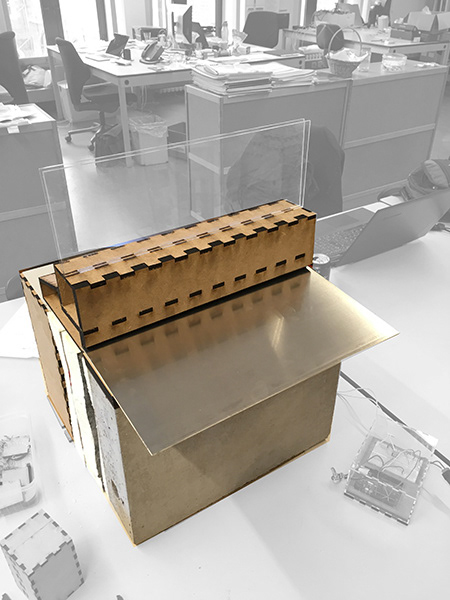
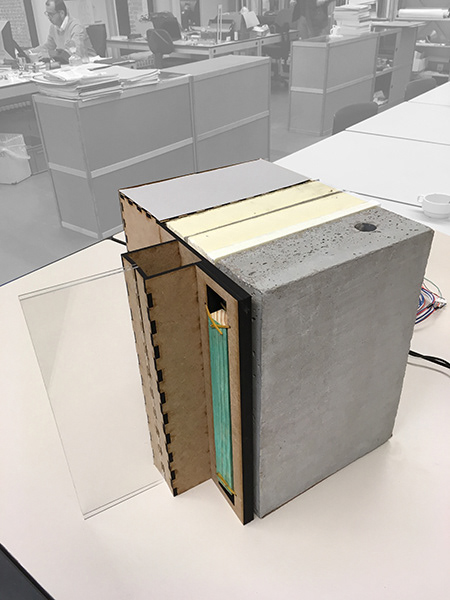

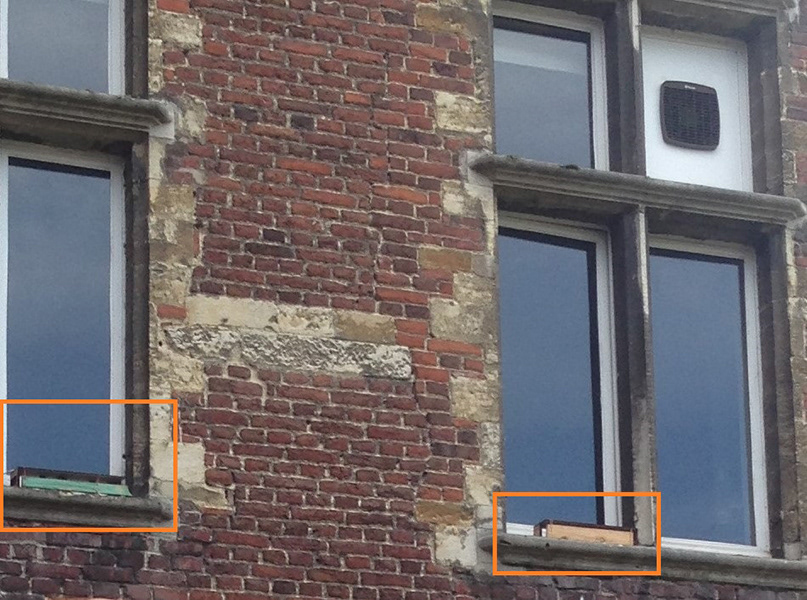
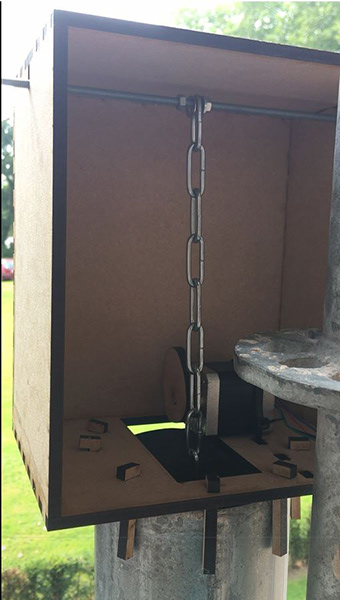
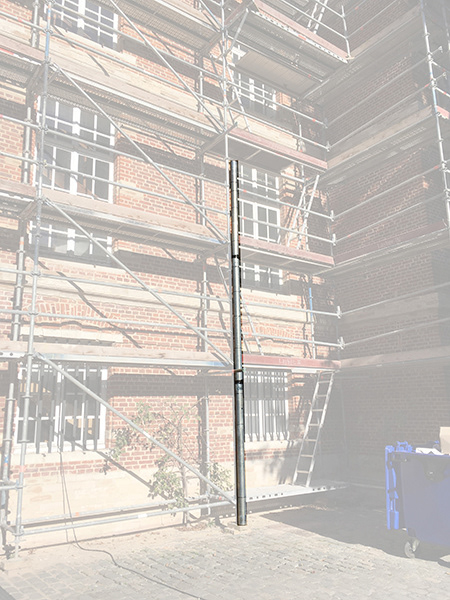



To simulate the potential soundscape, a prototype was build consisting of 5 MDF boxes, each containing a different piece of wood (with a different tone) and a solenoid with a hammer. These boxes, when placed on an existing façade simulate the intended soundscape on an architectural scale and demonstrate the potential of sound as a medium for media architecture. A 1:1 scale model of the windows sill was created to investigate the integration of the wooden bar and solenoid into the architectural detail with optimal sound emission, while meeting the strict technical requirements such as water resistance, maintainability, robustness, cost price etc.